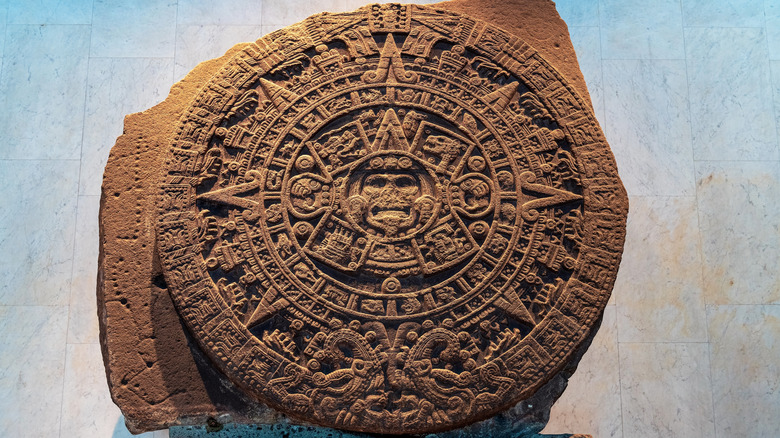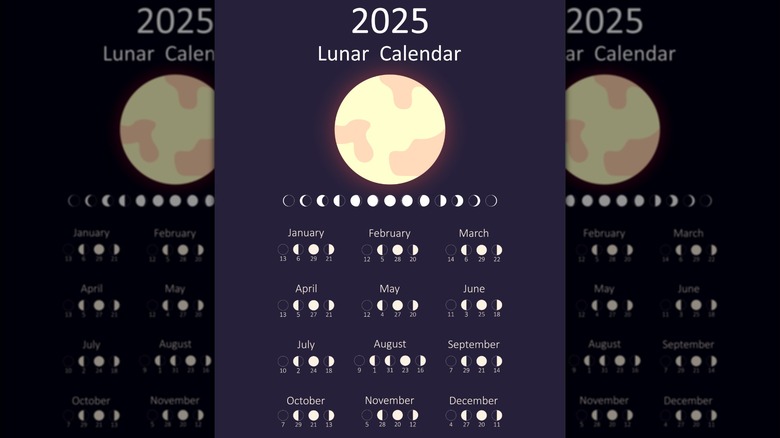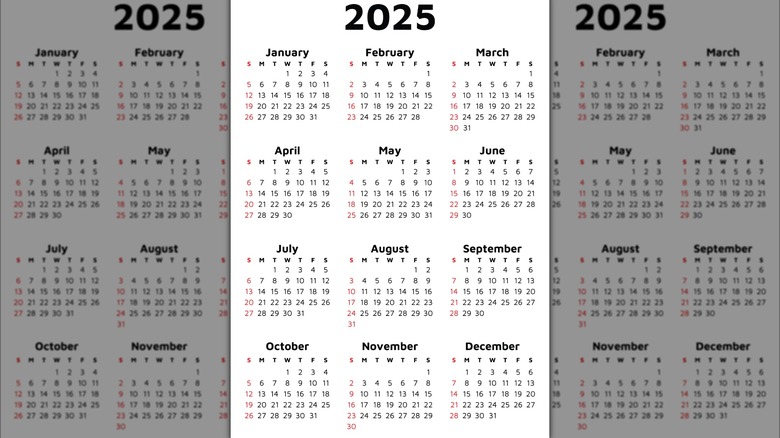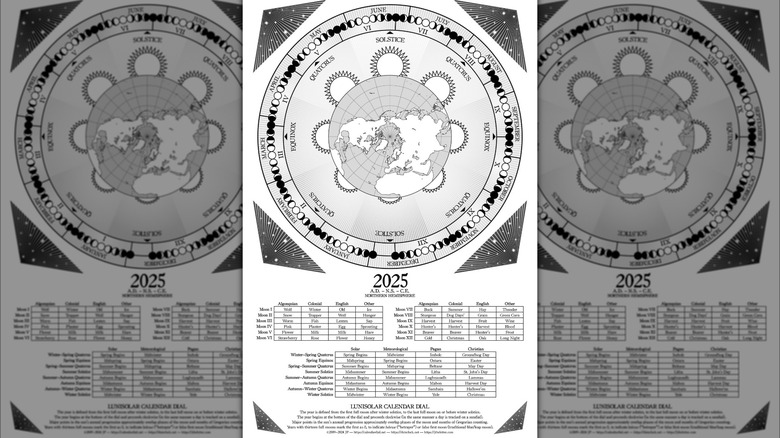What Is The Difference Between The Lunar Calendar & The Solar Calendar?
For thousands of years, cultures have used celestial bodies to track the passage of time. Few details about timekeeping are available about prehistoric areas, but it's believed that the first known calendar to measure time was made by the Sumerians just 5,000 years ago. Over the centuries, various cultures — from the Egyptians to the Aztecs to the Chinese — have divided their calendars into days, weeks, and months based on the movements of the sun, moon, and Earth, which brings us to the main difference between the lunar and solar calendars.
Much like the difference between solar and lunar years, a lunar calendar is based on the cycle of the moon, while a solar calendar is based on the position of the sun and corresponding seasons as Earth orbits its star. As a result, one month on a lunar calendar doesn't begin or end at the same time as the same month on a solar calendar. On top of that, there's a lunisolar calendar that synchronizes both types of timekeeping, although not perfectly. These differences are better to understand after learning about how each of these calendars works.
The lunar calendar and how it works
The Sumerians are likely the first people to base a calendar on the different phases of the moon. As the older of the two calendars, the lunar calendar is easier to follow because all you have to do is observe each phase of the moon's cycle. It doesn't measure the passage of time down to a tee, though.
One lunar month (also called a synodic month) starts on the day of the new moon and ends on the following new moon — about 29.5 days. With 12 months in a year, which results in 354 days, there is an average of 11 days unaccounted for compared to a solar year. Buddhist and Hebrew cultures compensate for that by adding a 13th month every two or three years to resynchronize the lunar calendar with the seasons. Since the Islamic Hijri calendar doesn't compensate for the time gap, though, important cultural events occur earlier each year. Even the seasons begin at slightly different times.
The first day of the lunar month varies from culture to culture as well. Generally, each synodic month starts either with a new moon or with the first visible crescent moon a day or so after the new moon. Yet, the month on some Hindu lunar calendars begins the day after a full moon.
The rise and prominence of the solar calendar
While the Egyptians initially used a calendar based on the phases of the moon, they switched around 3100 B.C. to tracking the passage of time by watching for the Sirius star in Canis Major — a constellation near Orion, to the lower left — to rise next to the sun. Their commitment to counting the 365 days between the star rising in the same position led to the discovery that it takes that long for Earth to orbit the sun. It's one of the oldest records of a solar calendar — featuring 12 months, each 30 days long, and five extra days to celebrate the gods. Since Earth's orbit is actually 365.25 days long, the Egyptian calendar length was adjusted to include an extra day every four years (leap year) in 237 B.C.
The Julian calendar was established in 45 B.C. to include one month (February) of 28 days and 11 months of 30 or 31 days each, taking into account the leap year with an extra day in the shortest month every four years. By the mid-1500s, though, there was an excess of 10 days, so the Gregorian calendar was created in 1582 to correct the timekeeping issue. While it has the same number of months and number of days in each month as the Julian calendar, it omits leap years on centurial years indivisible by 400 and accounts for the passage of the seasons based on the sun's position in Earth's sky. Most of the world still uses this solar calendar, and the U.S. colonies adopted it in 1752.
The lunisolar calendar and how it works
In between all the updates and switching of calendars based on specific celestial bodies, some cultures around the world used a combination of lunar and solar calendars. This merged version is called a lunisolar calendars, and historians believe it was formulated sometime between 3000 and 2001 B.C. Ancient civilizations throughout Greece and the Middle East (except Egypt) used it to track both the moon phases and how the seasons change based on the Earth's orbit around the sun.
Generally, the months are based on the lunar cycles, while the year itself is based on Earth's orbit around the sun. One example is the Jewish calendar, which features 12 synodic months. Each month has 29 or 30 days, except for Ḥeshvan and Kislev, which each may have 29 or 30 days. As a result, a lunar year can be 353 to 355 days. Since that's shorter than a solar year, a 30-day month (First Adar) is added before Second Adar during a leap year, which then has 383 to 385 days. There are seven leap years every 19 years (235 synodic months), after which the lunar cycles fall on the same days in the solar year again.
The Chinese calendar is another lunisolar example with 12 months that are presented as numbers or Chinese zodiac animals. The months alternate in lengths of 29 and 30 days for a total of 354 days, so an extra month is added in leap years — which happens seven times within a 19-year period like the Jewish calendar — and takes the name of the previous month.



